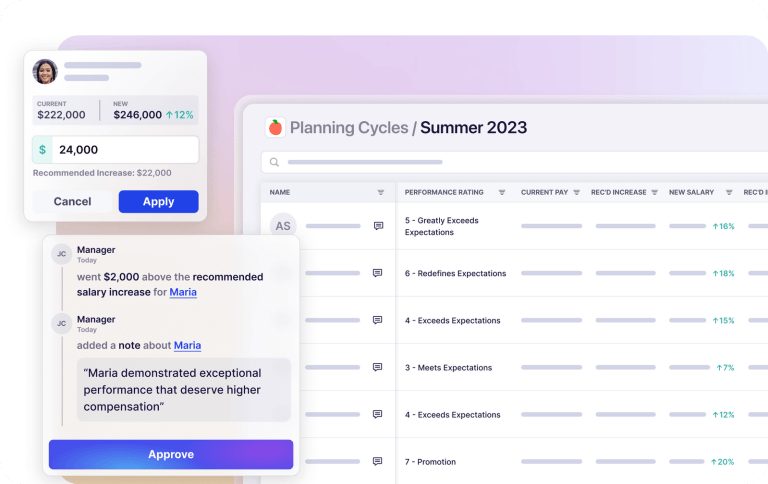Job leveling is tricky, most salary survey providers give a level guide of 6 individual contributors (IC) levels and 6 manager levels. However, this can be too large for small companies, and too restrictive for later-stage companies. So how do you create a solution?
The best way to do this is to assess your organization’s layers. Job levels are really an employee performance tool, that demonstrates to employees how their progressive work will correlate to an increase in pay over time. So if you are a small organization with few layers, fewer levels would be a fit. If you have 2 layers of managers, you may need more. But a typical job level structure for a small company would look like:
- Entry
- Senior/Lead
- Principal/Manager
- Director
In this structure, there are actually 6 total job levels — 3 IC, and 3 Management levels. This would last for up to about 30 employees.
Past that, you need to look at the salary survey levels and ask — how do I effectively slot my talent into these? Here is a full list of questions you should ask yourself along with some guidance from the Pequity team.
1. What job level does the majority of your talent slot into?
Typically companies will have a concentration of talent in their middle layers. However, there are times when an organization is “top-heavy” or “bottom-heavy.” This can highlight if you have a portion of your workforce with too few levels to slot into, causing a concentration of them to be pulled into a single job level.
2. What is your IC to manager ratio?
If you have large teams, you may need fewer managers. However, if you have many pockets of teams of 5 or less, you may need more management levels to accommodate, as these individuals will also want to move up. You may also consider a “single ladder” leveling system in this world — or where a level can be used both for a manager and an individual contributor. This helps ensure that you don’t accidentally have an employee of a similar or higher level reporting to a manager; this does have to happen occasionally, but you should be able to spot this in your org easily!
3. Are all job levels tied to a title change?
Some organizations have job levels but no titles. This matters, because you’ll need to discuss why you have a separate level versus bucketing multiple levels together. Is it to give increases over time? Is there a significant scope or responsibility difference between these levels? For some companies, a title change is used to show progression in the organization over a compensation increase. If this is the case you’ll need to have more levels.
4. Are pay increases solely tied to job levels?
If you offer merit increases not associated with a job level change, you may be able to simplify and offer fewer levels.

5. What job level in the salary surveys best represents your talent?
When you look at the salary surveys, do you have at least some of your talent matched to every available job level? Or are there levels you don’t use?
It’s not uncommon for companies to not hire IC1 (entry) or IC6 (principal) roles. You should see what your talent org is doing.
6. How long do you expect talent to stay at each job level?
This is key in determining level quantity. For example, an entry-level role is probably expected to be promoted or move up within 12 months. This means you will likely need more job levels for junior employees to progress through. For a Principal level though, this is often a “terminal” level — meaning, it’s the last level for the employee to move into. They may stay in this role for years, so you want to be prepared.
Once you assess these, you should be able to paint a picture of how many levels your organization needs. All you have to do is take the salary survey data, and determine how each of YOUR job levels matches into them. It’s okay to have 3 levels in a single-level benchmark, especially if it’s a senior role. Once you have it matched though, you can create compensation ranges and proceed from there.
Conclusion
Creating a job leveling framework that matches your company and salary survey data requires careful consideration of your organization’s unique structure, talent distribution, IC to manager ratio, title and pay increase policies, and employee career progression expectations. By assessing these factors, you can determine the appropriate number of job levels for your organization and align them with the available salary survey data. It’s important to regularly review and update your job leveling framework as your organization evolves and grows. A well-designed job leveling framework can provide a transparent and consistent approach to compensation and career progression, helping to attract, retain, and motivate top talent in your organization.
